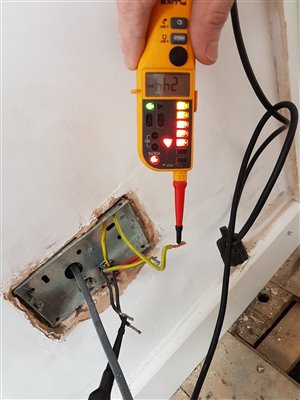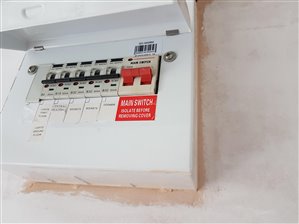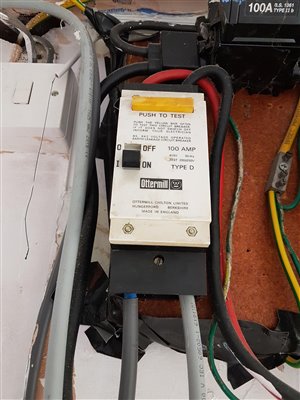Sparkingchip:
From experience I would say two people on a circuit is more dangerous than one, I have seen other electricians working in pairs energise circuits whilst one of them is still working on it, one pair did it three times in one day.
In which case they have not undertaken safe isolation. Lock off with a hasp and one padlock each.
gkenyon:Sparkingchip:Is opening the ceiling rose of a pendant, which does not require any tools to test anymore dangerous than removing the cover of the consumer unit to test Ze, etc?
Andy B
Polarity Test can be a dead test, and in that respect is far less dangerous than removing the cover of the consumer unit to conduct live tests.
Connecting a loop tester performed more than one test at the same time.
To be honest when changing a light fitting I will connect the tester to check polarity, loop impedance and then trip the RCD if there is one before taking down the old fitting, then walked back to the consumer unit to isolate, then confirm the fitting is dead and so on and do forth. Bearing in mind there's lots shoddy wiring out there to catch out the unwary, like the Bulgarian builder who dismantled this socket fitting and the bathroom fitter who pulled the cable into the back of it.


Sparkingchip:Connecting a loop tester performed more than one test at the same time.
To be honest when changing a light fitting I will connect the tester to check polarity, loop impedance and then trip the RCD if there is one before taking down the old fitting, then walked back to the consumer unit to isolate, then confirm the fitting is dead and so on and do forth.
Agreed ... but ... Polarity test should be conducted BEFORE energization, see Regulation 643.1
And regards the other situation ... yes, I'm sure we get too many of those.
Chris Pearson:
I'll bet you any money that those RCBOs are not tested monthly!
The single pole RCBOs are all in the off position, remember the bit about single pole devices having to be in the live conductor, that's not much use when there is reverse polarity on the entire installation.
Andy B.
Sparkingchip:Chris Pearson:
I'll bet you any money that those RCBOs are not tested monthly!The single pole RCBOs are all in the off position, remember the bit about single pole devices having to be in the live conductor, that's not much use when there is reverse polarity on the entire installation.
OK, so the tenant diligently presses the test buttons and nothing happens; but the lights come on, the telly works, heaters get hot, and motors go round and round. Does he (or she):
(a) notice?
(b) think that it is a bit odd, but they are all the same?
(c) ask a question in here?
(d) panic?
(e) isolate and request an emergency call out from the nearest qualified sparks?
We're about to take you to the IET registration website. Don't worry though, you'll be sent straight back to the community after completing the registration.
Continue to the IET registration site